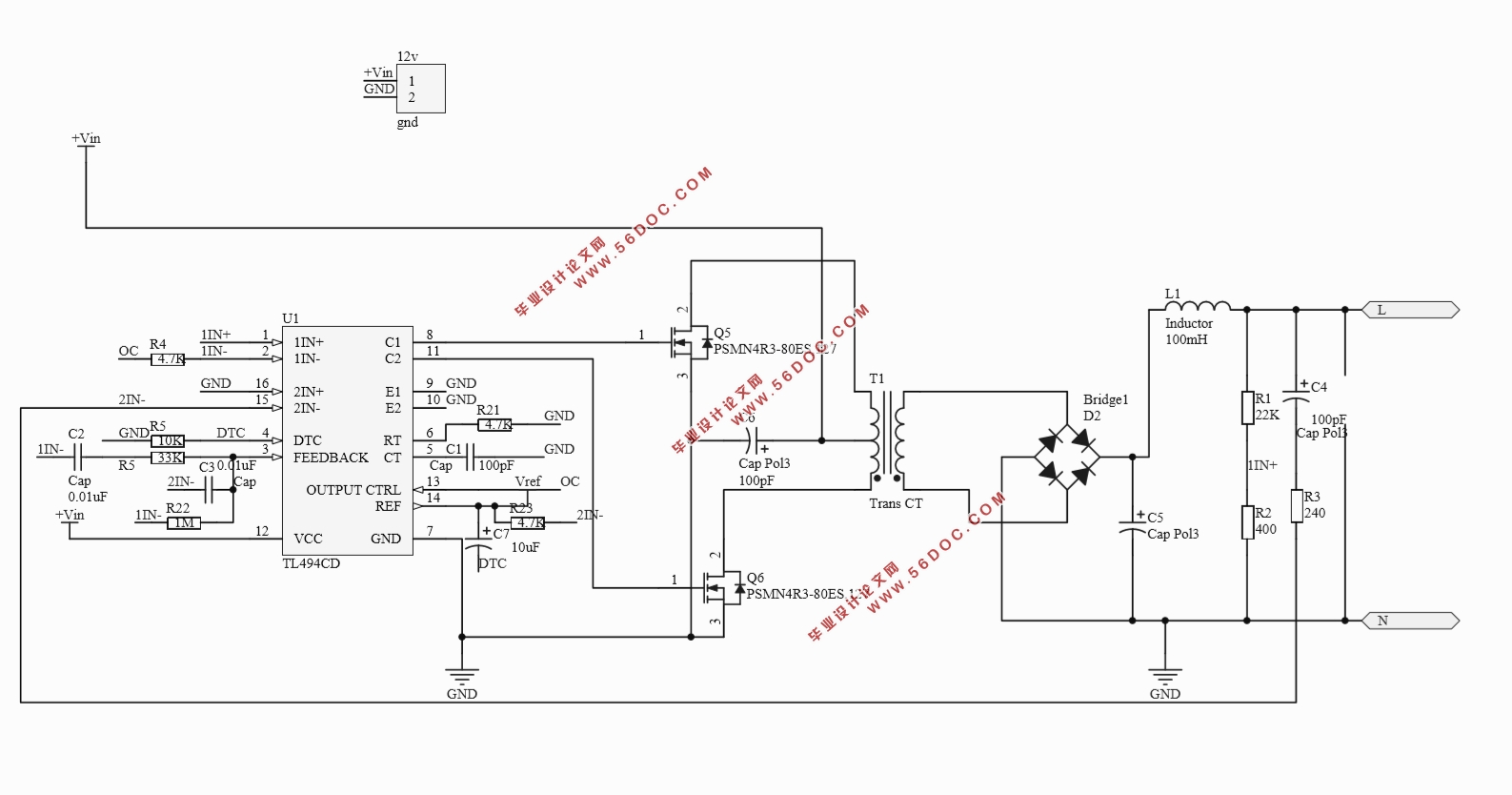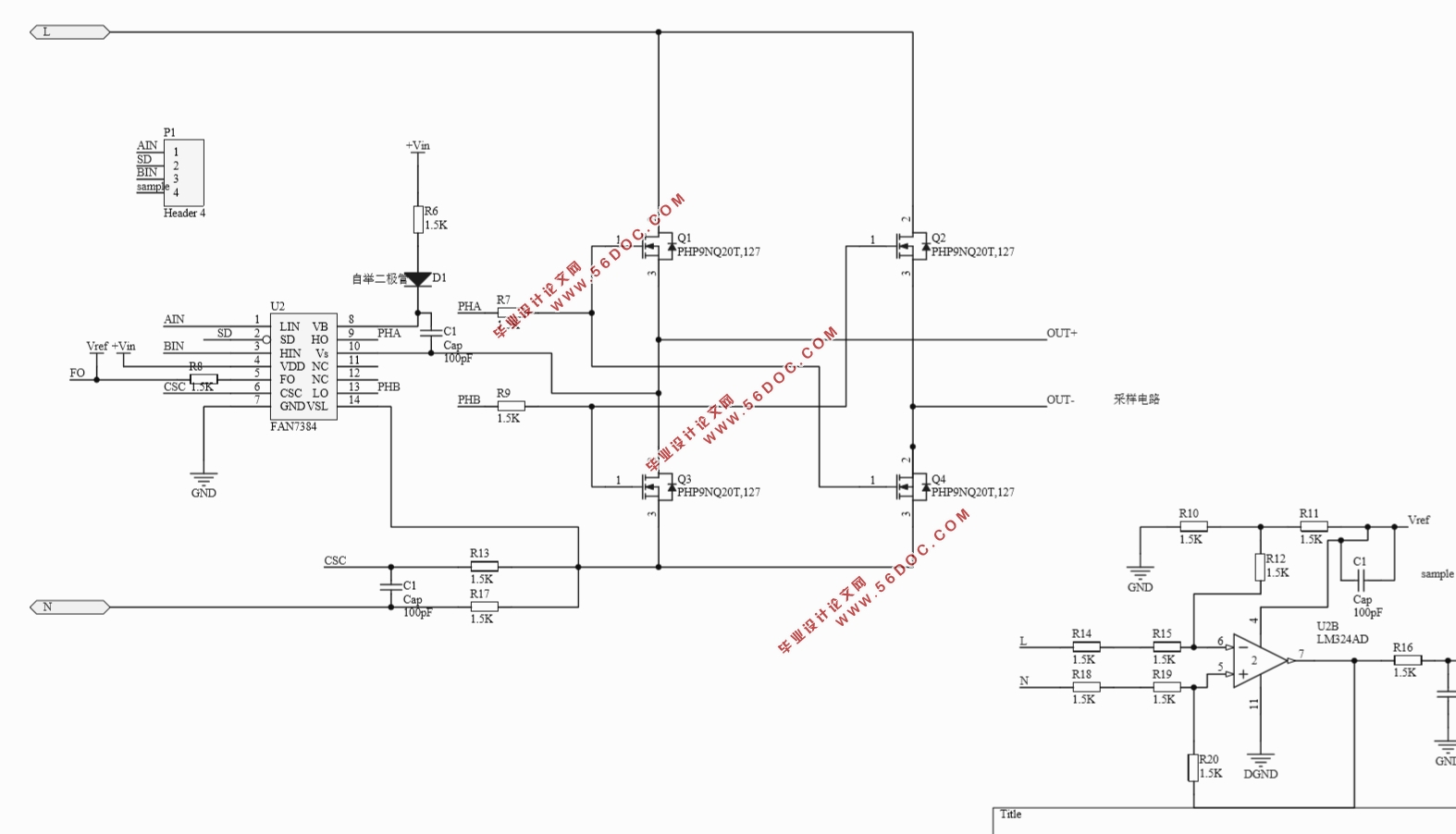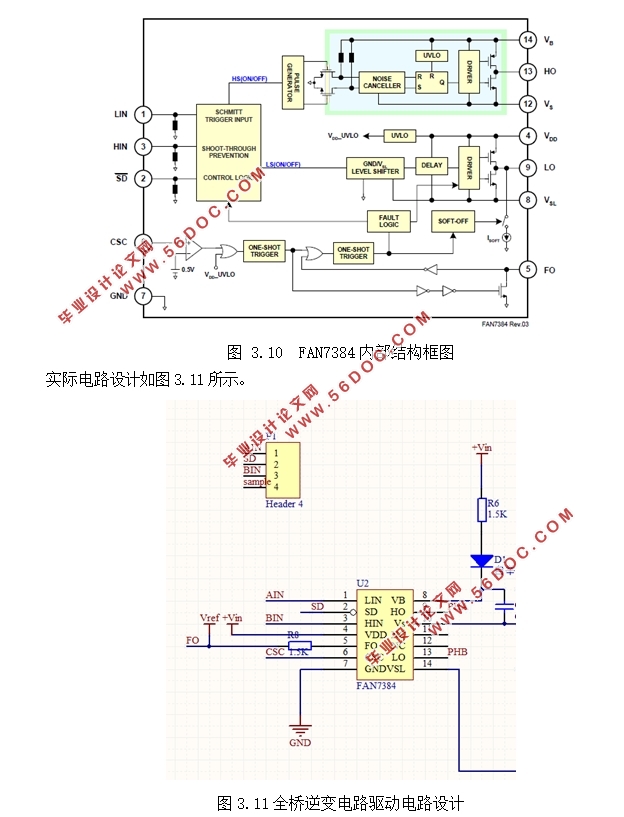基于单片机控制的小型逆变电源设计(附电路图)(任务书,开题报告,外文翻译,论文13000字)
摘要
随着中国的经济发展和科技进步的快速发展,中国的能源消耗,在国际上远超许多国家。同时,我国在之前的一段很长的时间内,能源结构上都是以石化资源消耗为主,其中特别是煤炭的消耗居首位。但是传统石化资源的消耗由于技术和各种原因,在使用的时候产生的污染与我国人民对环境的要求产生不可避免的矛盾。其中太阳能是解决方法中最为干净之一,其无污染、方便、资源巨大等成为将来成为最受欢迎的资源之一。太阳能利用中,逆变技术是其中极其核心的一环之一。在实际应用中,无源逆变技术的灵活性、便利性及其携带方便使其成为具有广阔研究空间与前景。
本文首先介绍以太阳能电池为应用背景的逆变电源系统的国内外发展现状和趋势,在分析正弦波无源逆变电源的工作原理后,对本次系统提出要求并进行总体的设计。
而后,将对小功率逆变电源原理上进行分析后,进行电路上的设计。其中DC-DC变换电路将采用隔离型推挽式电压变换器,其针对的是低电压输入应用环境。整流方案上,选择全桥滤波;滤波方案上,将选择电容滤波。DC-AC变换电路方面,采用全桥整流电路。除此以外,还对控制电路,采样电路以及保护电路进行设计。
其次,本次设计用到的是SPWM(正弦波脉宽调制)技术进行逆变。本文的实现方法是调制法,产生单极性的脉宽调制信号进行晶闸管的控制。同时本文通过在MATLAB软件上进行仿真,计算出相应的控制时序,从而方便地植入到单片机控制中。
最后,本文采用了由意法半导体生产的STM32F1系列的单片机,实现对高频互补的SPWM输出。
关键词:逆变电源;正弦波脉宽调制技术;STM32
Abstract
With the rapid development of China's economy and the progress of science and technology, China's energy consumption, in the international far more than many countries. At the same time, China in the past for a long period of time, the energy structure is based on petrochemical consumption, mainly in which coal consumption ranks first. However, the consumption of traditional petrochemical resources due to technical and various reasons, when used in the pollution and our people's environmental requirements have an inevitable contradiction. One of the solar energy is one of the most clean solution, its pollution-free, convenient, huge resources become the future become one of the most popular resources. Solar energy utilization, inverter technology is one of the most important part of the ring. In practical application, the flexibility, convenience and convenience of passive inverter technology make it become a kind of research space and prospect.
In this paper, we will first introduce the current situation and trend of the inverter power system with the background of the application of solar cells. After understanding the working principle of the sine wave passive power supply, this paper puts forward the requirements and overall design of the system.
Then, the principle of low-power inverter power supply after the analysis, the circuit design. One DC-DC converter circuit will use isolated push-pull voltage converter, which is for low-voltage input application environment. Rectifier program, will choose full-bridge filter; filter solution, will select the capacitor filter. DC-AC converter circuit, will use full-bridge rectifier circuit. In addition, the control circuit, the sampling circuit and the protection circuit are designed.
Second, this design will be used SPWM technology for the inverter, the SPWM inverter technology, as well as the commonly used SPWM sampling method for analysis and discussion. This method is the modulation method, resulting in unipolar pulse width modulation signal for thyristor control. At the same time this paper will be in the MATLAB software simulation, calculate the corresponding control timing, which is easily implanted into the microcontroller control.
Finally, this paper uses STM32F1 series of STMicroelectronics STM32F1 series of single-chip, to achieve high-frequency complementary SPWM output.
Key Words:Inverter ; Pulse Width Modification ;STM32



目录
摘要 1
第1章 绪论 1
1.1 目的及意义 1
1.2 国内外的研究现状分析 1
1.2.1 国外研究现状 1
1.2.2 国内研究现状 2
1.3 研究的基本内容 2
第2章 逆变电源系统总体设计 3
2.1 逆变系统的主要设计内容 3
2.2 逆变主电路选型 3
2.3 系统总体设计方案 4
2.3.1 DC-DC升压电路方案设计 5
2.3.2 DC-AC逆变电路方案设计 6
第3章 逆变系统硬件电路设计 7
3.1 DC-DC升压电路设计 7
3.1.1 推挽式电路 7
3.1.2 脉宽调制电路设计(PWM信号发生电路) 9
3.1.3 高频变压器设计 11
3.1.4 输入整流滤波电设计 15
3.2 DC-AC全桥逆变电路设计 16
3.2.1 主控芯片介绍 16
3.2.2 场效应管驱动电路设计 18
3.3.3 推挽电路及开关管选型 21
3.3 保护电路及采样电路设计 21
3.3.1 过压保护电路 21
3.3.2 欠压保护电路 22
3.3.1 高温保护电路 23
第4章 逆变系统软件程序设计 25
4.1 逆变系统软件方案 25
4.1.1 实现原理介绍 25
4.1.2 软件流程及框图 26
4.1.3 中断程序 27
4.2 SPWM时序仿真及时序计算 28
第5章 总结 31
参考文献 32
致谢 33
附录A 35
|







